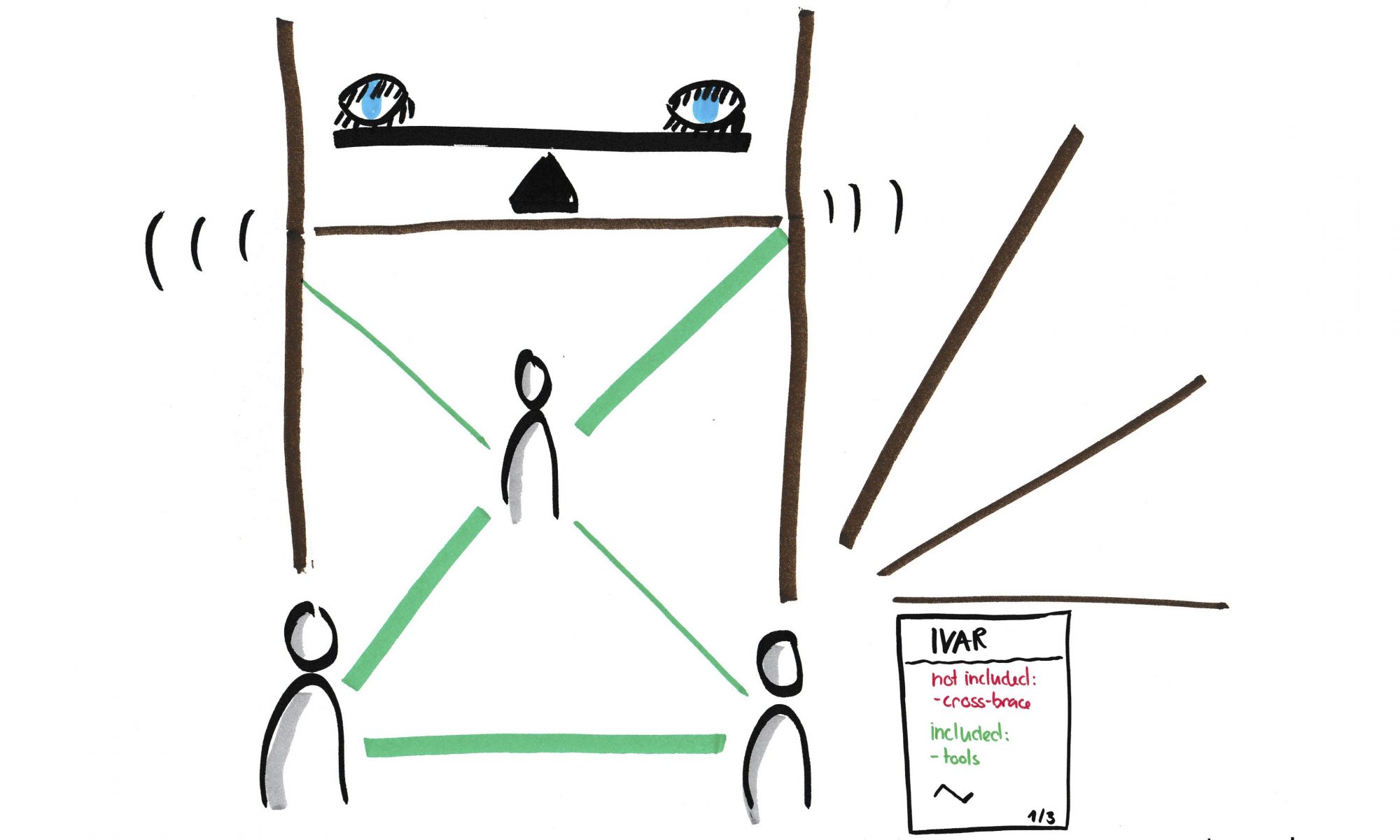Sociocracy 3.0 provides structures of stability. It is based on patterns that structure communicative interactions to collaborate as equivalents. The triangle can symbolize this: Ever forgotten to buy a cross-brace at IKEA and watching your shelf collapse? The triangle is what gives a square shelf stability…
A couple of weeks ago I attended an Agile GOTO Night on Sociocracy 3.0 with Jef Cumps. The first thing he made us do was the following exercise: Everybody stood in the room (about 40 people) and chose secretly two persons of whom one was an attacker and the other one was a victim. Then you had to try to position yourself in a line between these two so that you could protect the victim from the attacker. To make things short: It wont work. If a bunch of people try to secretly form lines they cannot succeed because whenever one person moves some lines will be broken and set in motion further moving. It doesn’t work neither if you try to be on the end of the line (being attacker or victim) nor put yourself in the middle of two persons.
The second exercise though was much easier: Put yourself in a triangle with two people so that the distances between every person is about the same. It didn’t take long and even if someone moved the whole structure was quite stable.
Sociocracy 3.0
Sociocracy 3.0 is about structure, stability and equivalence. It is about collaboration. In contrast to Holocracy Sociocracy 3.0 isn’t top-down but can be experimented with anywhere in a company. It consists of seven principles:
- consent
- equivalence
- accountability
- continuous improvement
- transparency
- effectiveness
- empiricism
Sounds all very agile, doesn’t it? Well, 3.0 doesn’t only refer to the third step in the evolution of sociocracy, it also refers to agile an lean principles.
Coming back to agile communication: Collaboration needs some kind of communication and communication works more collaboratively when people are treated as equivalents. They then communicate on eye-level. Everybody is heard (and everybody listens to the others) and everybody makes relevant objections in their area of expertise. That means that everyone respects each other and the discussion is about factual concerns rather than about political alliances.
In Sociocracy 3.0 you can object if doing something would impede improvement. It seems important to understand objections and concerns on a objective level in order to resolve them. There is some very practical advice about how to do that in the patterns, „the template[s] for successfully navigating a specific context“. The group then comes through discussion to a consent and to productive collaboration.
No need to say that therefore they do need some social and communicative competencies. And above all they need to want to resolve challenges on this factual level.
